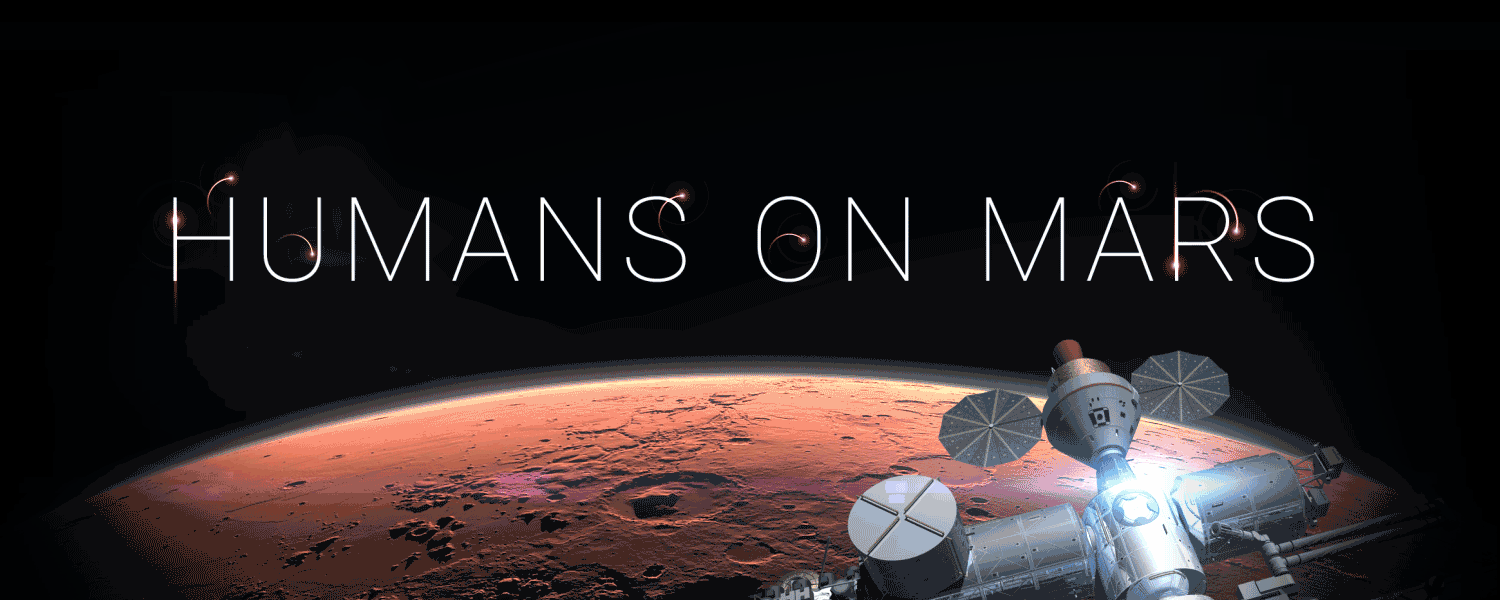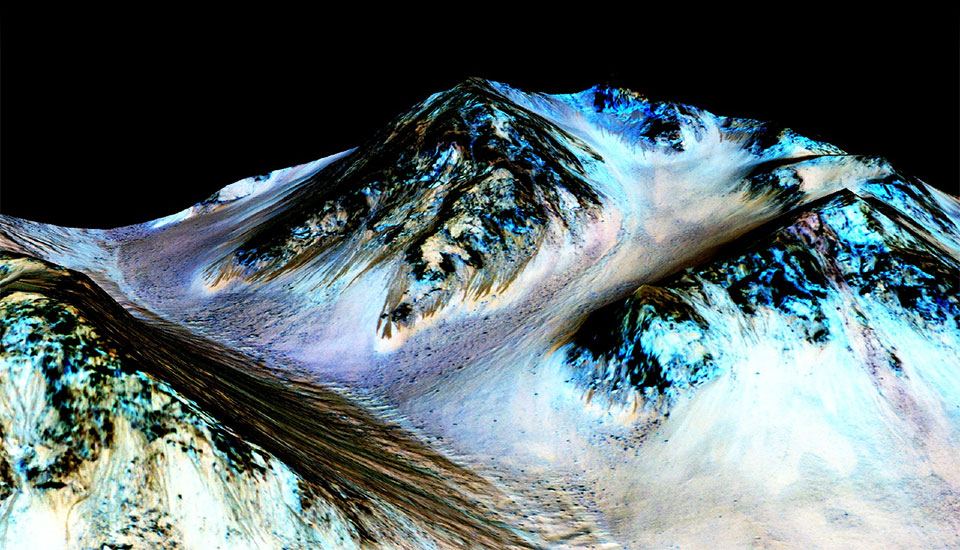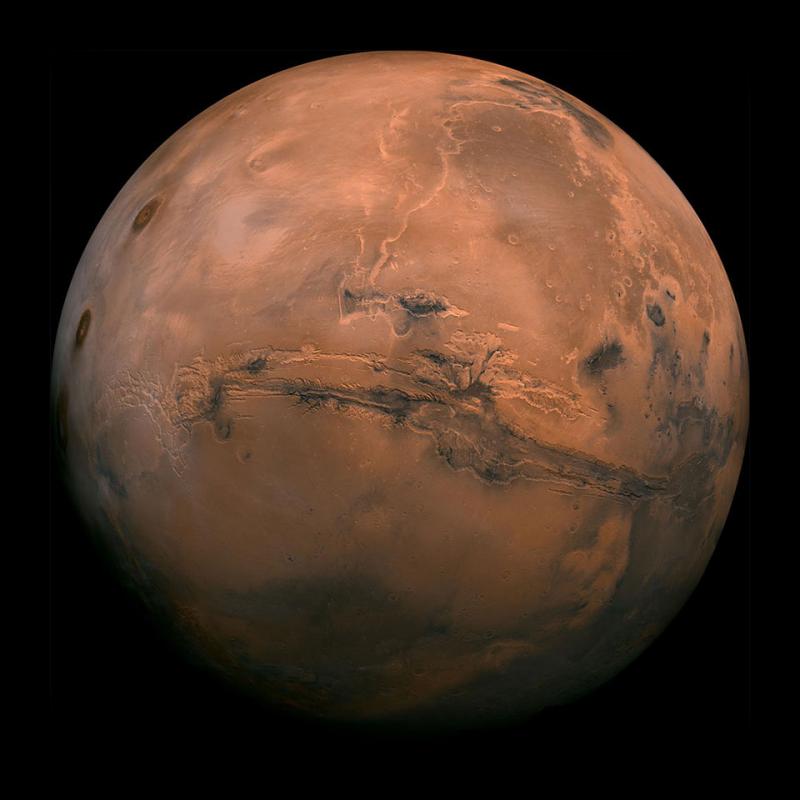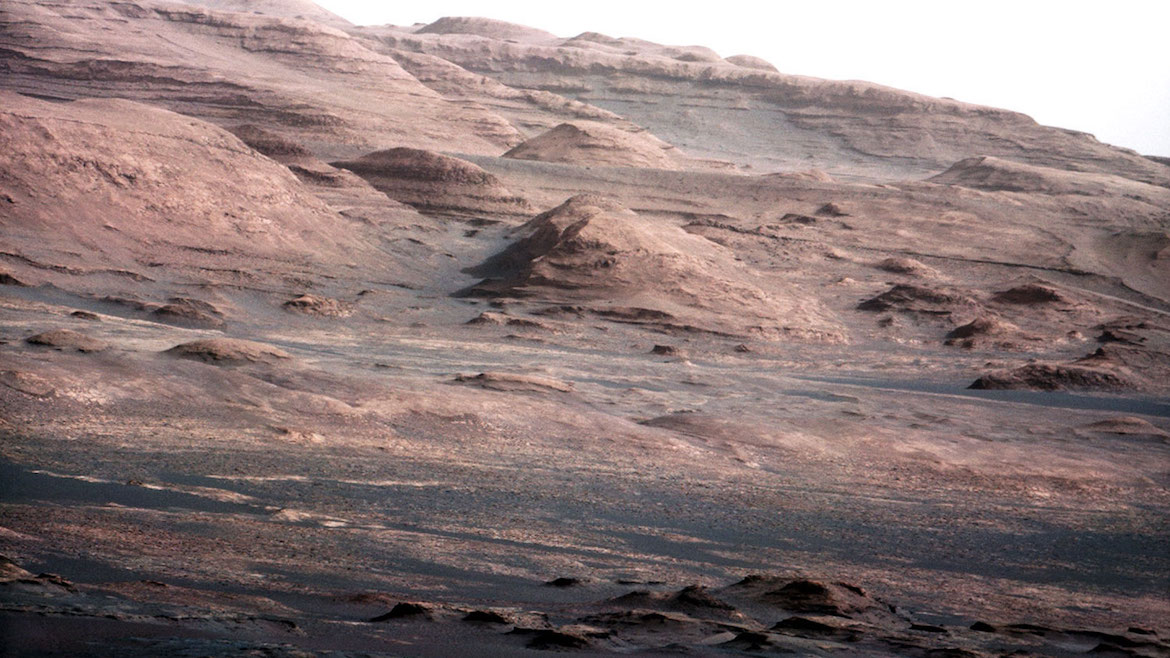
The end of September proved to be important and exciting for Mars and planetary scientists. NASA and the Jet Propulsion Lab held a press conference to unveil the findings of a Georgia Tech-led study about flowing water on present-day Mars. Their findings indicate that water on Mars isn’t just ancient or frozen.

The NASA announcement, which was billed as a “mystery solved,” kicked off a week that will end with the release of The Martian. The science fiction thriller stars Matt Damon. He plays an American astronaut abandoned by his crew, stranded alone on the Red Planet and desperately trying to find a way to signal to Earth that he’s still alive. The movie is based on a 2011 best-selling book of the same title.
Georgia Tech’s researchers are working to make sure humans on Mars aren’t something reserved only for Hollywood. Faculty members are creating the next technologies for future missions, landing locations, and instruments to find life. Two Ivan Allen College of Liberal Arts faculty shared their perspectives (below) along with faculty from the Georgia Tech colleges of engineering and of science. Their collective expertise and insight will help guide us all to the next frontier.

Martian Politics
Will it be a worldwide effort?

Mariel Borowitz is an assistant professor in the Ivan Allen College Sam Nunn School of International Affairs who studies space and technology policy. While plenty of technical challenges will have to be overcome before humans are sent to Mars, Borowitz says they are just as difficult as the politics.
Carrying out a human mission to Mars will require more than a decade of planning and preparing. To have any hope of keeping to NASA’s timeline of “sometime in the 2030s,” Congress must provide adequate funding every year from now until then, regardless of changing political priorities, partisan battles, and — perhaps most challenging — the fact that they may no longer be in office by the time constituents see the payoff from this investment.
A successful mission to Mars also requires continuity and support across multiple presidential administrations. However, there is a great temptation for each new president to put his or her own personal stamp on the space mission. In fact, three different “missions to Mars” have been announced since the 1980s. Most recently, President Barack Obama canceled President George W. Bush’s plan, replacing it with a scaled back, “flexible path” approach to human exploration (which NASA now calls the “Journey to Mars”).
But national politics aren’t the only issue. International cooperation is essential for such an expensive and complicated mission. The good news is that almost every major spacefaring nation agrees that putting humans on Mars is the long-term goal. The bad news is that they disagree on the intermediate missions that can and should be undertaken between now and then. For example, NASA wants to place an asteroid in orbit around the Moon for human study, but there’s very little international interest. Both Russia and China — the only nations other than the U.S. that currently have the capability to send humans into space — have announced plans to go to the Moon.
Of course, there’s always the private sector. SpaceX, Inspiration Mars, and Mars One have all announced plans to send humans to Mars — some much sooner than any government plans. Unfortunately, technical and funding issues apply to them as well. Mars One, which plans to send people on a one-way mission as soon as 2026 to start a permanent colony, seems both technically and financially unlikely to succeed on their current schedule. Inspiration Mars wants NASA to provide the rocket for free — something NASA has not expressed any interest in doing. SpaceX is building its own rocket, targeting a piloted mission by the 2020s, but the company is on a launch hiatus after a failure earlier this year.
These political challenges can be overcome. NASA, and human exploration in general, has long had strong, bipartisan support. Despite debates about the intermediate missions, domestic and international leaders agree that the ultimate goal is to put humans on Mars, and NASA is currently building the most powerful rocket in history — the Space Launch System. Now the United States needs to engage with its international partners to agree on a long-term plan to keep development on track.
Humans on Mars prediction:
NASA is currently projecting that humans will land on Mars in the 2030s. Since nothing ever seems to go exactly according to plan, I'd expect something more like 2040. Some potential wild cards could speed things up: commercial entities make significant progress and push the government to go faster and/or China starts focusing on Mars (through competition or cooperation).
Can science fiction become reality?

Lisa Yaszek is a professor in the Ivan Allen College School of Literature, Media, and Communication who assigns the book The Martian in her history of science fiction class. She says that Mars sci-fi has shifted back and forth dramatically for more than a century, largely in relation to technology.
When Andy Weir finished writing The Martian in 2011, publishers paid no attention. So he published it himself, posting one chapter at a time on his website. People started to notice and urged him to put the entire book on Amazon. It sold 35,000 copies in three months (at 99 cents). In 2013, a publisher bought the rights and The Martian debuted on The New York Times best-seller list the next year.
Science fiction writers have dreamed of Mars’ potential since the late 1800s when telescopes improved and started to become affordable for more people. The images weren’t very good, so people interpreted what they thought they saw on Mars in terms of what they knew to be true about Earth — the white substance on the poles must be frozen water and the canals on the surface probably once held liquid water. People knew the Moon was uninhabitable. But seeing this new world led to a boom of Martian storytelling about life. Many authors wrote about a Martian species fighting its own extinction by invading someplace more promising: Earth. H.G. Wells wrote the legendary War of the Worlds based on these themes in 1897. Authors also told wildly romantic stories about Mars, which looked like the new American West — a whole new frontier. Books like Edgar Rice Burroughs’ John Carter of Mars series chronicled humans escaping Earth for a new start on a new planet.

Better visuals in the 1940s and ’50s revealed that the planet wasn’t a drying-out Garden of Eden. Colonization would be very difficult, but we were going to do it anyway. That’s when the real settlement stories began, complete with the dangers of doing so: deaths during construction accidents or people left behind on expeditions. We saw a whole raft of stories in the 1950s that are called Robinsonade, or based on Robinson Crusoe. Arthur C. Clark’s The Sands of Mars is a good example.
Science fiction authors stopped writing about Mars in the 1960s and ’70s when probes revealed it might be impossible to ever live there.
But in the 1990s, optimism returned after President George H. W. Bush announced a plan to put Americans on Mars in the 21st century. His idea eventually fizzled, but it sparked a science fiction renewal. A wealth of new books and movies about colonization were released as NASA landed rovers on the planet. Director Paul Verhoeven’s Total Recall and author Kim Stanley Robinson’s The Mars Trilogy are a few examples. That excitement continues today in current science fiction.

The Martian is classic science fiction. It’s true to the optimism of science and technology with opportunities to map and explore the universe. It’s the Mars version of Robinson Crusoe. Weir tells a story of an astronaut left behind, trying to find a way home. It’s truly a throwback to the older classics in the 1950s. At the same time, it updates classic science fiction by addressing the very real difficulties of exploring Mars in a contemporary, global context.
Humans on Mars prediction:
We’ve already been there. Science fiction has taken us to Mars since the 1800s through books, films, and comics. When humans actually arrive, I wonder what it will feel like. Will it be anything like what I’ve read about my entire life?
Bringing Humans to Mars
Faculty from the schools of aerospace engineering, chemistry and biochemistry, and earth and atmospheric sciences explore the other aspects and possibilities of humans on Mars.


